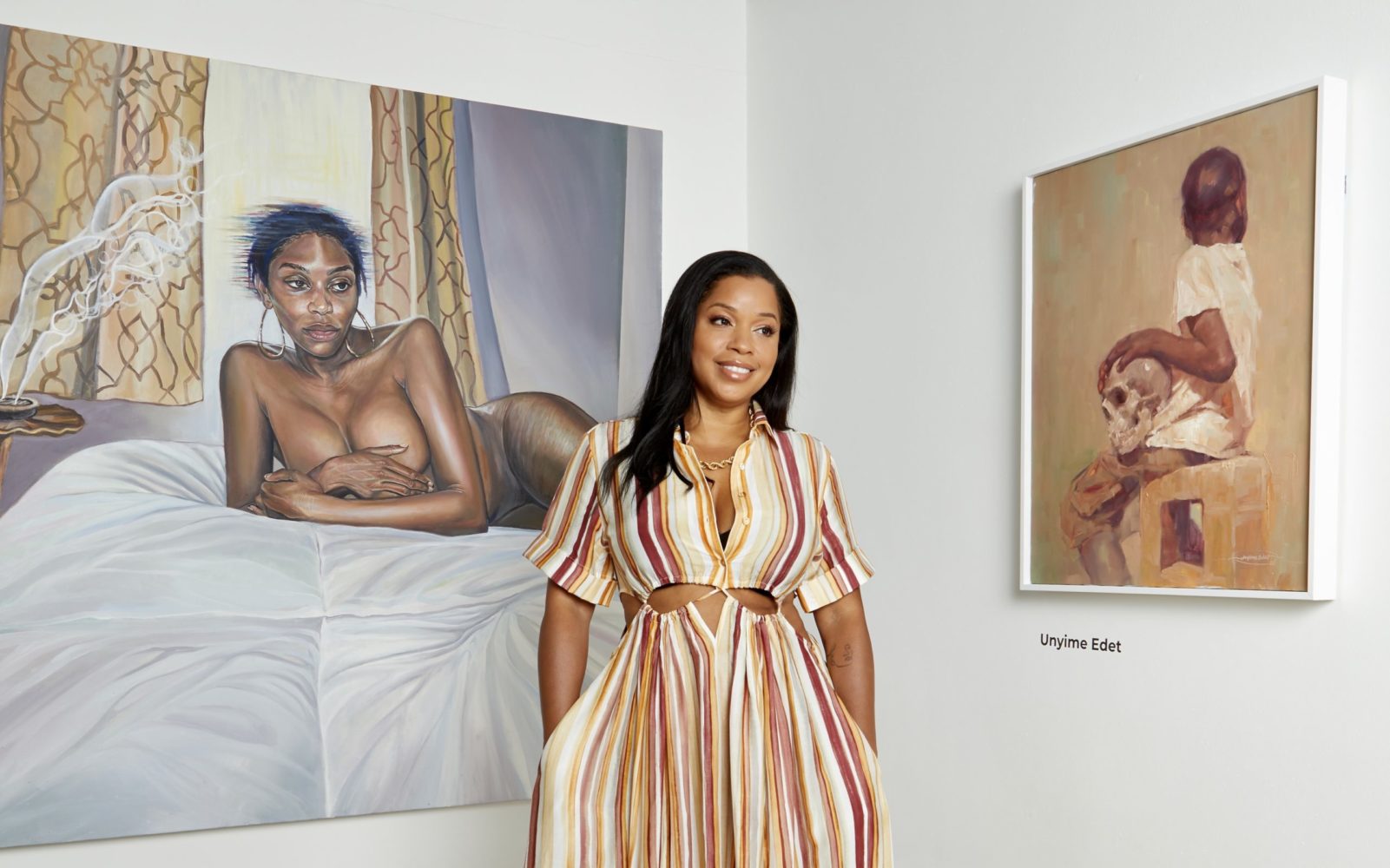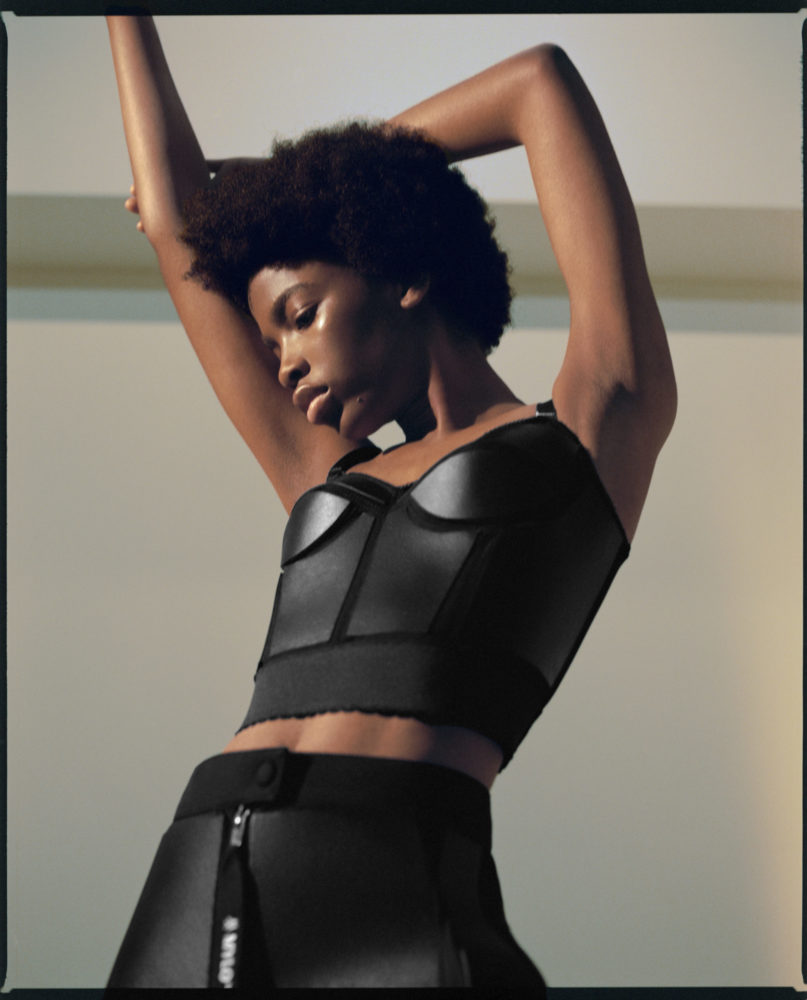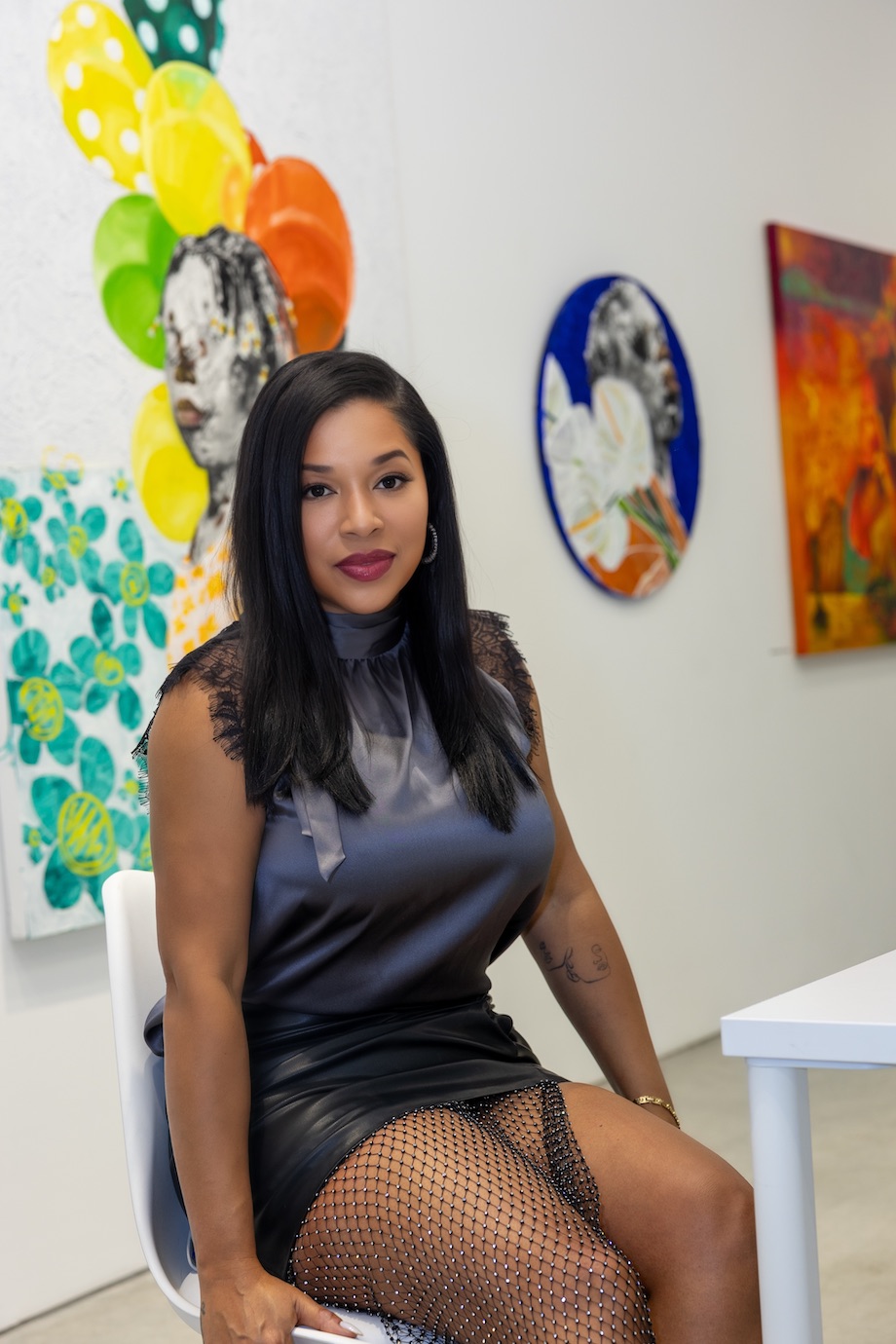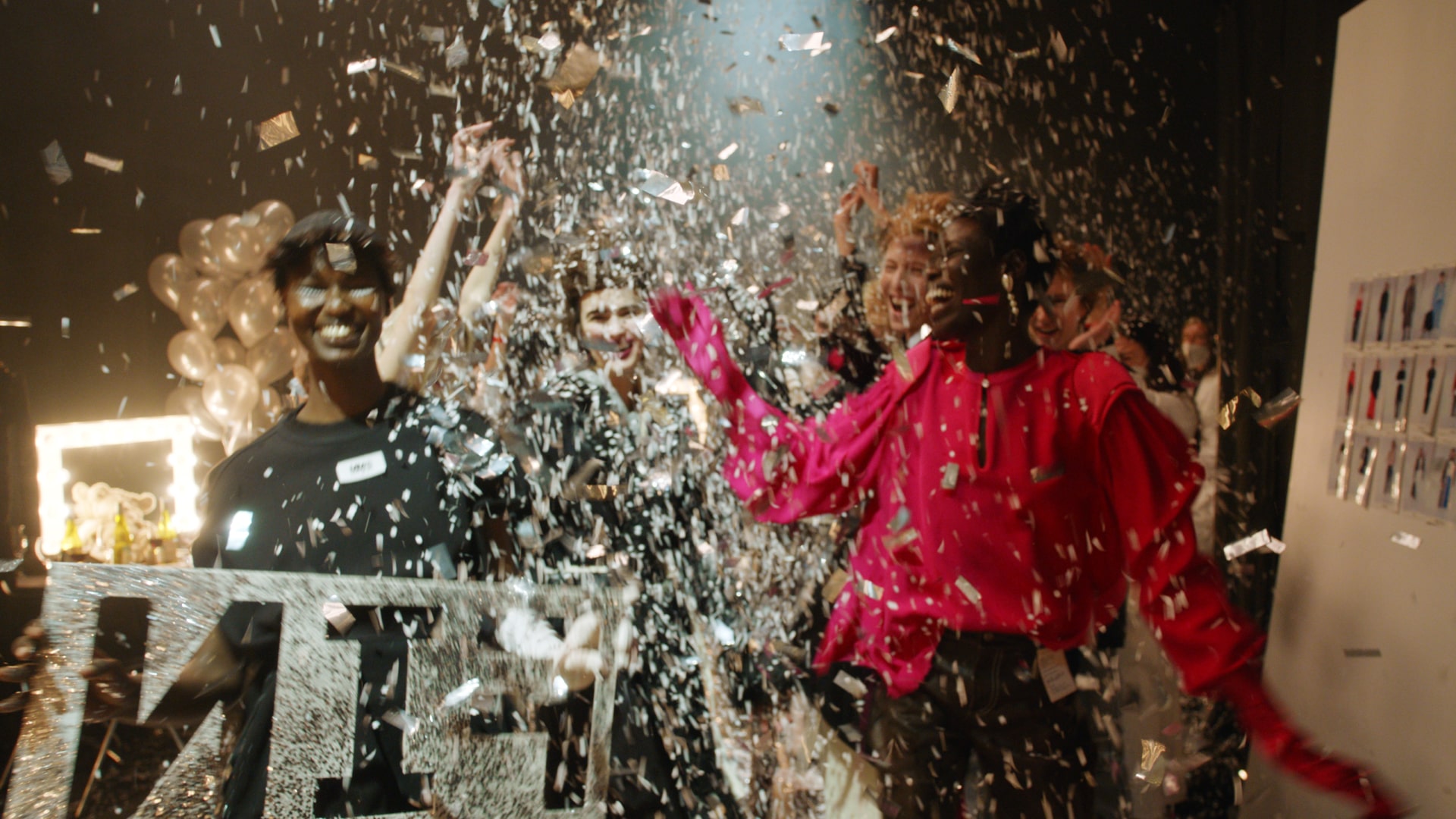On International Women’s Day in 2016, Mashonda Tifrere established the arts organization ArtLeadHER. The platform champions female artists that the Harlem-reared musician and graduate of Christie’s in New York wasn’t seeing regularly represented in the traditional gallery system. Putting a feminine twist on the words “art leader,” Tifrere has produced art shows and collaborations with others, like Beyoncé’s BeyGOOD, Gucci’s Chime for Change, and Donna Karan’s Urban Zen space.
Next month, Tifrere is presenting two new shows with Artsy and NYC Culture Club entitled “Small Wonders” and “Be of Good Courage.” In the Oculus building of The World Trade Center, both will be on view from December 9 through January 14, 2022, exhibiting works by artists like Hugo McCloud, Derrick Adams, Patrick Alston, Ferrari Shepard, Ronald Jackson, Lauren Pearce, and Alanis Ford. Proceeds from “Small Wonders” will be donated to Children’s Aid NYC, yet all artists will pocket 60 percent of their sales.
Ahead of these shows, Whitewall spoke with Tifrere about her evolution in the arts, how her new San Diego surroundings are shaping her, and what was seen in her recent exhibition at SHOW Gallery in Los Angeles.
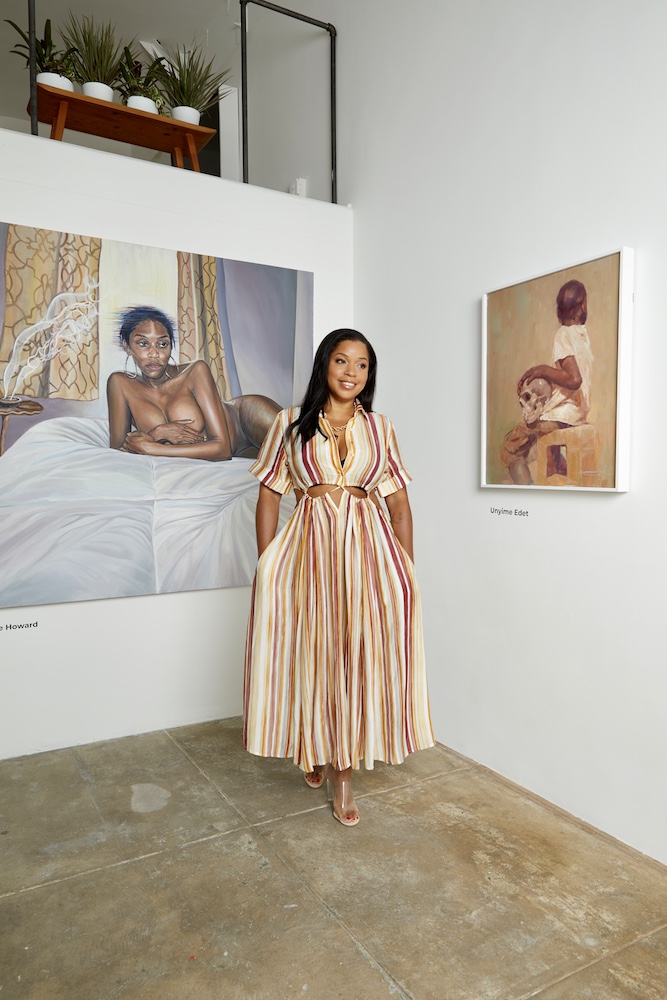
Portrait of Mashonda Tifrere by Michael Rowe.
WHITEWALL: What led to the foundation of ArtLeadHER in 2016?
MASHONDA TIFRERE: Imagine going on a gallery tour in a large, metropolitan city and visiting eight exhibitions, only to see the art of three women in total hanging on the walls. None of them Black or Brown. The disparity was disturbing. These constant experiences lead to the birth of ArtLeadHer. I personally got really tired of gallery culture, both for artists and curators, and the way they treated women as if they didn’t exist or were not good enough. We can focus on what is missing, or we can create opportunities for what we do want to see. ArtLeadHer focuses on creating rich opportunities for woman identifying artists.
WW: How has ArtLeadHER evolved since its launch?
MT: ArtLeadHER focuses on creating rich opportunities for female-identifying artists. The needs of female artists have changed, and we want to remain flexible enough to grow with those changes and meet those needs. We are hosting artists’ residencies for one year at Mana Contemporary with the Monira Foundation. It is a blessing to be able to offer respite to working artists. Free studio space is a big peace of mind. As of 2021, I’m now presenting works on the West Coast, and I recently launched a sister company called Art Genesis, where I’m working with and presenting works from living artists of all races, colors, and genders.
WW: Your first West Coast show, “Art Genesis: The Beginning of Legacy” at SHOW Gallery, recently included seven emerging artists. What did you intend it to represent?
MT: Art Genesis is the beginning of legacy. The show transcends genres and mediums. Each artist focused on their own unique perspective of a traditional curated, themed show. I want artists to feel free to present work without having to always follow a curatorial vision. I believe that as long as I maintain the unity of the work and the common goal of community, the artists should have the liberty to speak for themselves, not solely my vision.
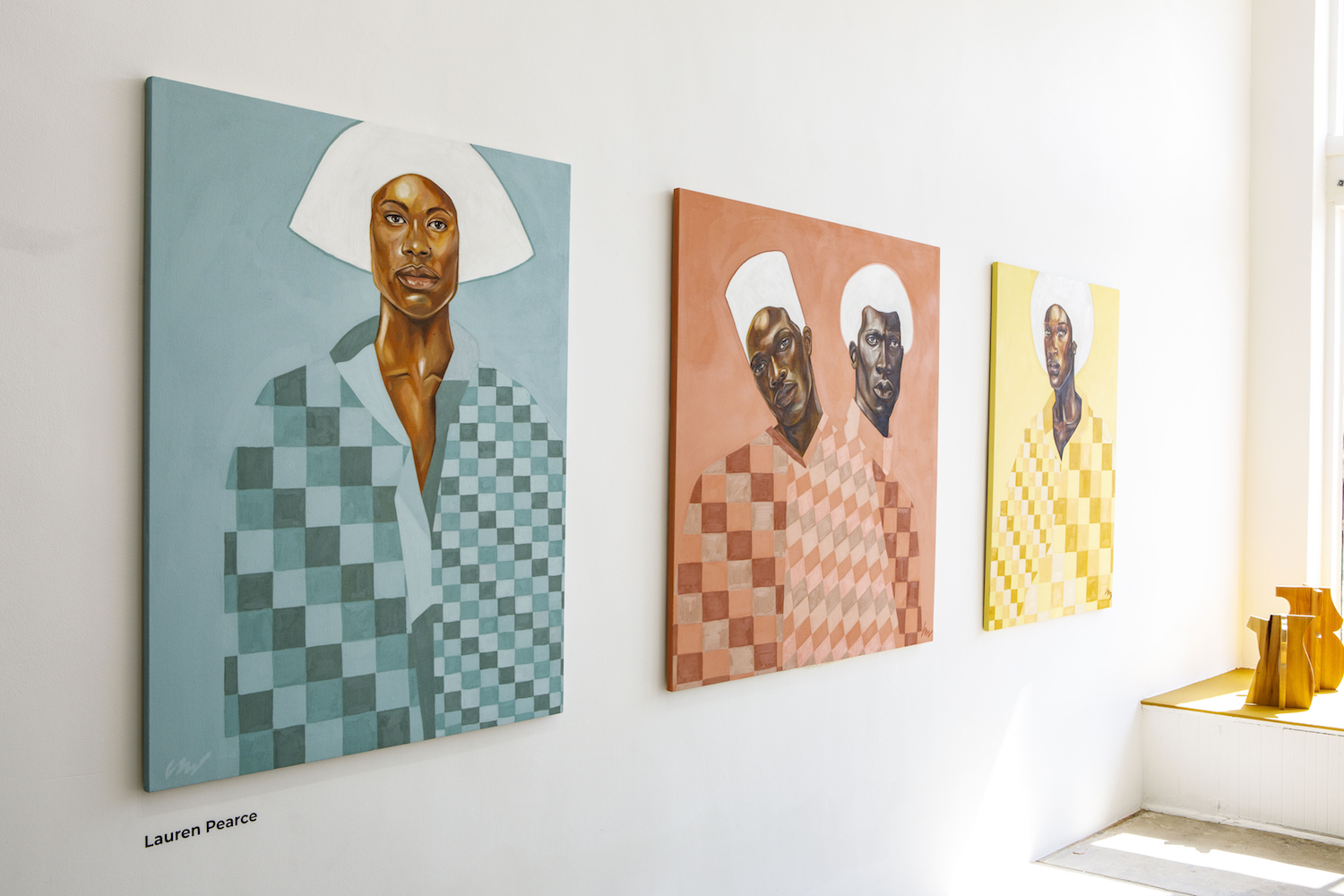
“Art Genesis: The Beginning of Legacy” at SHOW Gallery, photo by Michael Rowe.
WW: You’ve mentioned that growing up in Harlem exposed you to a dynamic mashup of arts, music, and culture. How do you feel that shaped you?
MT: Harlem is the rock, my foundation. Harlem gave me the tools and the perspective to thrive and survive in almost any setting. I recently watched Questlove‘s Summer of Soul and was blown away. The documentary was crafted from footage of the 1969 Harlem Cultural Festival, filled with stars from soul, R&B, blues, and jazz. It was considered the Black Woodstock. It showed a part of Harlems’s rich culture, its love for Black people, and our art. No matter what form the neighborhood takes, it will always have that renaissance energy. I am forever grateful for the influence it had on my life.
WW: How are your surroundings impacting you today?
MT: In the middle of 2020, and the middle of the pandemic, I left my life on the East Coast and moved to the coast of San Diego. It’s one of the best things I’ve ever done. I’m definitely being transformed and reshaped every day, with every sunset from my balcony, every time I eat right from my fruit trees. I love waking up in the middle of nature and eight minutes from the beach. A new appreciation for living in the moment and not wanting to rush or exhaust myself with things that don’t really attribute to my self-growth are very clear now.
WW: Where at home do you feel the most inspired?
MT: Sitting at my dining room table with a candle burning. It faces a beautiful orange tree in my front yard. The sweetest hummingbirds stop by and regularly and float in the air as they feed on the fruit. I varnished the table a darker color myself last year. I believe that wood carries energy. I put a lot of positive energy into that table.
WW: You’re an artist, curator, and activist in the art world, but also a mother and community change-maker. How do these worlds collide for you?
MT: Everything that I do is intentional. I work with artists who I genuinely enjoy as people, I curate shows that will add to the viewer’s life by way of emotional intelligence, and I’m a hyper-aware, conscious parent. All of these things marry; they work together and feed off of each other. I’m an empowered activist in the art world because I believe in providing for the community and the underserved. This also has so much to do with how I raise my son. I would like for him to use the same energy toward his friends and future life experiences.
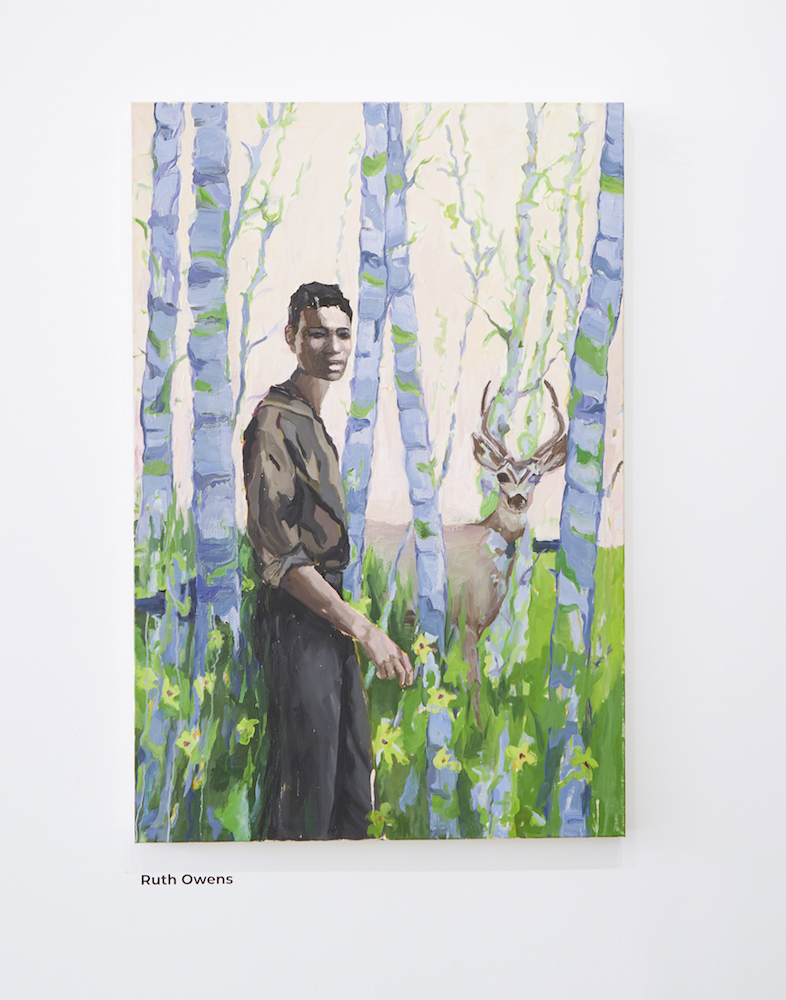
“Art Genesis: The Beginning of Legacy” at SHOW Gallery, photo by Michael Rowe.
WW: What is important for you to teach your son about the topics that have most impacted you—from power dynamics to supporting artists?
MT: Parenting, and my relationship with my 14-year-old son, is by far the most mindful and thoughtful interaction I’ve ever had with a human. Every second spent with him means something to me. I’m thinking of the words I choose to use, my actions, and the outcome all at once. This offering wasn’t provided to me from my parents, so I am careful with him in this aspect. Our deepest conversations always lead with honesty, self-love, and empathy.
When it comes to power, I’ve learned to allow him some autonomy over his life. Regardless of the fact that he is 28 years younger than I am, I still see him as an equal. He has his own mind and theories. My promise is to guide him but not try to change him. My philosophy is “nourish his roots so that he may grow and help him spread his wings so that he can fly.” The same applies to artists and creatives.
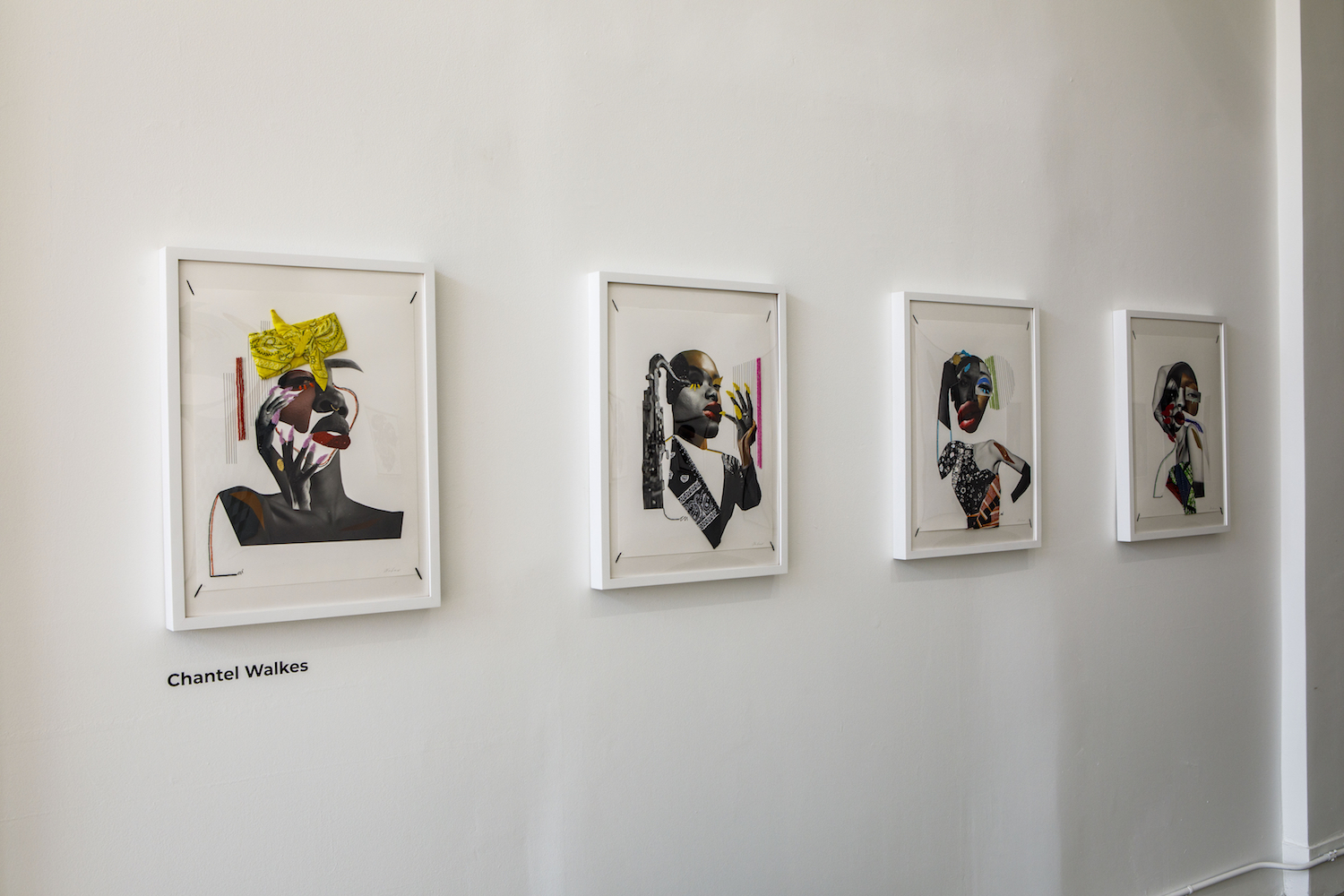
“Art Genesis: The Beginning of Legacy” at SHOW Gallery, photo by Michael Rowe.
WW: Just a few years older than your son is now, when you were 18 and signed a music publishing deal, you used early funds to purchase your first artwork—a photograph entitled Oak Tree, Snowstorm by Ansel Adams. Why this one?
MT: I was born in Boston. The snowstorms there were different from the ones in New York. The after-setting was extravagant and picturesque. I lived near some forest land, and the Ansel Adams piece reminded me of the big trees covered in clean white snow near my home. It was definitely a nostalgic piece.
WW: What’s in your art collection now?
MT: I’ve been really private with my collection. Each piece is so personal to me. I acquired a Toyin Ojih Odutola in 2018. Her work brings me joy daily. I’ve shared my Derrick Adams “Floater” on Instagram. It’s a special piece he created of me and my son. I’ve been collecting a lot of emerging artists lately: Patrick Alston, Lauren Pearce, Tawny Chatmon. I seriously love the work I collect. If you don’t love the work and you don’t have the capacity to protect it, don’t buy it.



